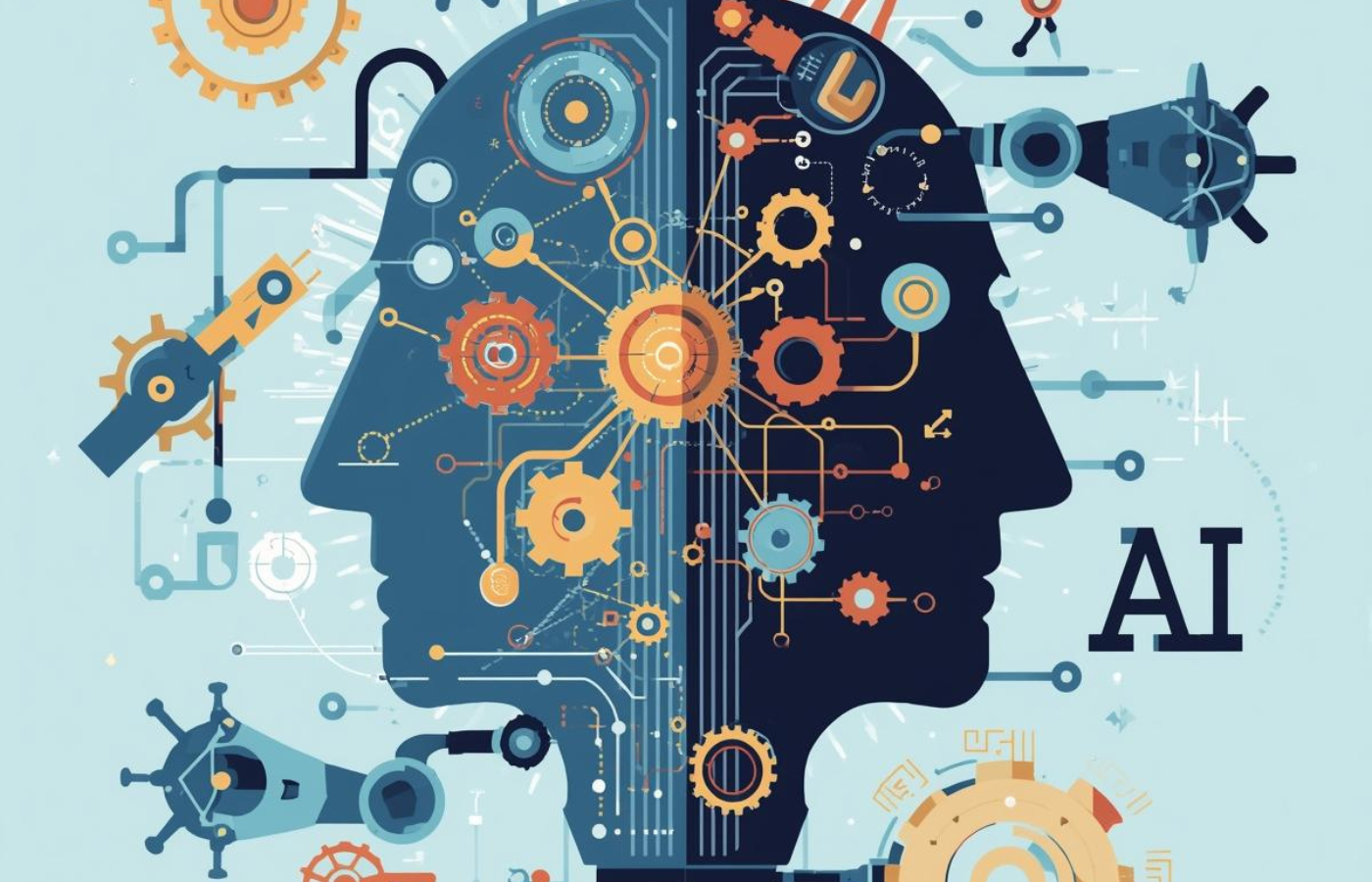
AI: The Future of Context: Industry Trends & Emerging Technologies
tl;dr
- Context windows are expanding exponentially: From 4K to 1M+ tokens in under 4 years
- Persistent memory systems are emerging: AI assistants that remember across sessions
- Multi-modal context is the new frontier: Combining text, images, code, and data
- New architectures enable infinite context: Ring attention and streaming transformers break traditional limits
- Industry adoption follows clear patterns: Early adopters see 10x productivity gains (but beware of poor planning)
In 2020, GPT-3 launched with a context window of 4,096 tokens—roughly 3,000 words. That seemed revolutionary at the time - and it was! Today, Google's Gemini 1.5 Pro handles over 1 million tokens in a single context[1]. That's not just growth; it's a fundamental transformation in what AI can do.
This explosive expansion represents more than technical progress. It's rewriting the rules of business automation. Tasks that were impossible yesterday—analyzing entire codebases, processing months of customer interactions, understanding complex multi-document relationships—are becoming routine. And we're just getting started.
The Context Window Revolution
From Scarcity to Abundance
The numbers tell a striking story. GPT-3's 4,096 tokens in 2020 grew to GPT-4's 32,000 tokens by 2023. Claude 2.1 pushed to 200,000 tokens later that year, while Gemini 1.5 now handles over 1 million tokens[2]. But what do these numbers actually mean?
Real Examples of What Fits in Each Context Size
4K tokens (GPT-3 era): A long email thread or a short blog post. You could analyze a customer complaint, but not their entire support history. You could review a function, but not understand the codebase.
32K tokens (GPT-4): A complete product requirements document or a small application's codebase. Now you could analyze an entire contract, review a full customer journey, or understand a complete software module.
200K tokens (Claude 2.1): An entire novel, comprehensive technical documentation, or hundreds of pages of financial reports. Suddenly, AI could digest your complete employee handbook, analyze months of support tickets, or understand an entire software project[3].
1M+ tokens (Gemini 1.5): Multiple books, entire code repositories, or a full year of business communications. This isn't just more capacity—it's a qualitatively different capability. AI can now understand your entire product documentation, analyze complete customer relationships, or review comprehensive regulatory filings.
Persistent Memory: The Next Frontier
From Stateless to Stateful AI
Traditional AI interactions are like meeting someone with amnesia—every conversation starts fresh. But that's changing rapidly. ChatGPT's memory feature now allows the AI to remember information across conversations, learning preferences, context, and history over time[4].
This shift from stateless to stateful AI transforms the technology from a tool to a collaborator. Imagine an AI assistant that remembers your coding style, your business priorities, your client relationships, and your strategic goals—not just for one session, but permanently.
The business value is immediate and substantial. Customer service agents don't need to re-explain company policies. Developers don't need to re-describe their architecture. Analysts don't need to re-define their metrics. The AI remembers and builds upon previous interactions.
Implementation Approaches
Different platforms are taking varied approaches to persistent memory:
ChatGPT's Memory System: Explicitly remembers user preferences and key information across all conversations. Users can view, edit, or delete memories, providing transparency and control.
Claude's Project-Based Context: Organizes persistent context around specific projects, maintaining relevant information within defined boundaries. This approach balances persistence with organization.
Custom Memory Solutions: Enterprises are building proprietary systems that integrate with their data warehouses, creating AI assistants with deep organizational memory.
Open-Source Alternatives: Projects like MemGPT and Langchain offer frameworks for adding persistent memory to any language model, democratizing access to stateful AI.
Privacy and security implications are significant. Who owns these memories? How are they protected? What happens when an employee leaves? These questions are driving new frameworks for AI memory governance.
Multi-Modal Context Integration
Beyond Text: The Full Picture
Context is no longer just about words. AI systems are beginning to understand and integrate multiple types from text to images, code, structured data, and even audio[5].
This multi-modal understanding mirrors how humans actually work. We don't analyze a financial report in isolation—we look at the numbers, examine the charts, read the narrative, and consider the market context. Now AI can do the same.
The technical challenges are substantial. Different modalities require different processing approaches, and combining them coherently requires sophisticated architectures. But the business benefits justify the complexity.
Industry Use Cases
Healthcare: The Harvard School of Public Health reports that AI-assisted diagnoses could lower treatment costs by up to 50% while improving patient outcomes by 40%[9]. When radiologists use AI that combines patient history (text), medical imaging (visual), lab results (structured data), and clinical notes (unstructured text), the AI doesn't just read the scan, it understands the complete patient context.
Manufacturing: Quality control systems can now integrate sensor data, visual inspections, maintenance logs, and operator notes. When a defect appears, the AI can correlate visual anomalies with temperature variations, recent maintenance activities, and historical patterns—identifying root causes that would be invisible to single-modal analysis.
Retail: Customer experience platforms merge behavioral data, product images, transaction records, and support interactions. The AI understands not just what customers bought, but how they browsed, what they looked at, and what problems they encountered which can enable rich and personalized user experiences.
Financial Services: Trading systems analyze market data, news articles, financial statements, and chart patterns simultaneously. The ability to include AI which can process documents alongside structured data and visual information will enable much more sophisticated analyses and assessments.
New Architectures Enable "Infinite" Context
Breaking Traditional Limits
The exponential growth in context windows isn't just about throwing more computing power at the problem. Fundamental architectural innovations are breaking through previous limitations.
Compression Techniques: Advanced models now automatically identify and compress redundant information, allowing effective context that far exceeds raw token counts.
Hierarchical Context Processing: Modeled after human memory, these systems maintain different levels of detail, keeping recent context in full fidelity while compressing older context into high-level summaries.
Ring Attention Mechanisms: Instead of requiring every token to attend to every other token (quadratic complexity), ring attention processes context in overlapping segments, maintaining global coherence while dramatically reducing computational requirements[6].
Streaming Transformers: These architectures process context as a continuous stream rather than fixed blocks, theoretically enabling infinite context. As new information arrives, the model updates its understanding without reprocessing everything.
Industry Adoption Patterns
Early Adopters and Their Gains
You've read the news and certainly some of it is legit.
Financial services firms leveraging context-aware AI report 10x productivity gains in document analysis and compliance review.
Healthcare organizations providing AI systems with access to complete patient histories, treatment protocols, and medical literature are improving diagnostic accuracy while reducing physician documentation time by up to 70%.
Legal firms reporting document review cycles, which once required teams of associates working for weeks, now happen in 8% of the time, with AI maintaining context across thousands of related documents.
Software development teams using codebase-aware AI assistants report 55% faster development cycles because the AI understands the entire architecture, coding standards, and project history.
Beware of Poor Planning
However, you do want to take what you read with a grain of salt because not implementations succeed and not all statistics are universally attainable. Poor or rushed executions and over-reliance on AI without proper structure will lead to costly failures[7].
Common Pitfalls:
Context Overload: Don't upload entire databases into AI's context as this will often result in very confused, inconsistent outputs. More context isn't always better.
Security Failures: Be careful not to expose sensitive data by inadequately securing your context management system. AI amplifies capabilities and it amplifies risk as well.
Cost Overruns: Even if you can leverage large context windows, they can be very expensive. Manage your AI budget very carefully as you establish internal best practices.
Over-Reliance: Context doesn't replace expertise. Make sure you have someone review AI inputs and AI outputs so errors can be caught before they create real damage.
Final Thoughts
The evolution from GPT-3's 4K token context to today's million-token models represents a fundamental shift in business and AI's role in it. This increase in context transforms AI from a sophisticated search engine into an incredibly useful and versatile partner.
But context is just the enabler. The real value comes from thoughtful implementation that matches technical capabilities to business needs. As is always the case, early adopters who plan carefully see transformative gains, while those who rush in without proper planning see costly failures.
The trajectory is clear: context windows will continue expanding, memory systems will become more sophisticated, and multi-modal integration will become standard[8]. Organizations that start building their context management capabilities now will be best positioned to leverage these advances.
The context revolution is here. The organizations that master it won't just work faster—they'll change the nature of work as we know it today.
Continue exploring our AI Context series: Understanding Context | Dos and Don'ts | Technology Basics | Business Applications | Industry Trends
References
- What Is an AI Context Window? – Coursera
- What is a context window? – IBM
- What is a context window—and why does it matter? – Zapier
- Claude vs ChatGPT: Which AI Reigns Supreme in 2025? – Descript
- GPT-4o vs. Gemini 1.5 Pro vs. Claude 3 Opus: Multimodal AI Model Comparison – Encord
- Large Language Model's Context Windows Get Huge – IEEE Spectrum
- About Your AI's Terrible Memory. Bigger Context Windows Will Not Fix It – Medium
- Long-Context Windows in Large Language Models: Applications in Comprehension and Code – Medium
- Understanding the Accuracy of AI in Diagnostic Imaging – RamSoft


